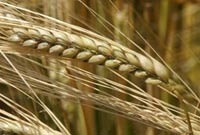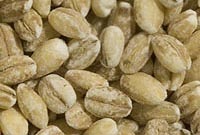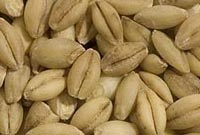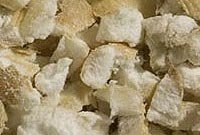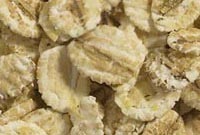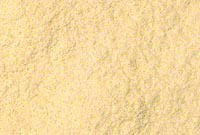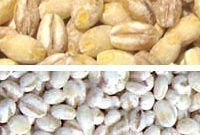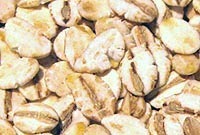Confused about all the different kinds of barley that are available?
This illustrated list will help you out.
|
Barley, growing in a field This is what barley looks like as it grows in the field. Most barley is what’s called “covered barley,” which means it has a tough, inedible outer hull around the barley kernel. This covering must be removed before the barley can be eaten. A less common variety, referred to as “naked” barley, has a covering, or hull, that is so loose that it usually falls off during harvesting. |
|
|
Hulled Barley (sometimes called Dehulled Barley) Hulled barley is covered barley that has been minimally processed to remove only the tough inedible outer hull. It’s challenging to remove the hull carefully so that some of the bran is not lost – but that’s what must be done for covered barley to be considered whole grain. (see Pearl Barley, below) |
|
|
Hulless Barley This type of barley has an outer hull that’s so loosely attached to the kernel that it generally falls off during harvesting. This cuts down on processing and ensures that all of the bran and germ are retained. |
|
|
Barley Grits When barley kernels are cut into several pieces, they become grits. Read the label carefully: grits from hulled or hulless barley are whole grain, but grits created by cutting up pearl barley are not considered whole grain.
|
|
|
Barley Flakes If barley flakes remind you of oatmeal (rolled oats), it’s because they’re created the same way, by steaming kernels, rolling them, and drying them. As with barley grits, flakes can be made from whole grain barley or from pearl barley, with only the former considered to be whole grains. Barley flakes cook faster, because they’ve been lightly steamed and because of their greater surface area. |
|
|
Barley Flour Barley flour is used in baked goods and as a thickener for soups, stews and gravies. While it contains gluten, the protein that helps baked goods rise, the type of gluten in barley flour does not promote adequate rising on its own, so barley flour is usually used with wheat flour. Look for whole grain barley flour, ground from hulled or hulless barley, not from pearl barley. |
|
|
Pearl Barley (not a whole grain) Pearl barley has been polished, or “pearled” to remove some or all of the outer bran layer along with the hull. If it’s lightly pearled, pearl barley will be tan colored (top photo); if it’s heavily pearled, barley will be quite white (bottom photo). Most of the barley found in the typical supermarket is pearl barley. Although it is technically a refined grain, it’s much healthier than other refined grains because (a) some of the bran may still be present and (b) the fiber in barley is distributed throughout the kernel, and not just in the outer bran layer. Pearl barley cooks more quickly than whole grain barley. |
|
|
Quick Pearl Barley (not a whole grain) Quick barley is a type of barley flake that cooks in about 10 minutes, because it has been partially cooked and dried during the flake-rolling process. Although barley flakes can be whole grain and technically it would feasible to create quick whole grain barley (similar to quick oats, which are whole grain), the quick barley commercially available today is made from pearl barley and so is not whole grain. |
Photo credits: Freefoto.com (Barley Growing in Field); Shiloh Farms (Hulled Barley, Hulless Barley, Barley Grits, Barley Flakes); Whole Grains Council (Barley Flour, Pearl Barley, Quick Barley).
Thanks also to the National Barley Foods Council for some of the information on this page.

